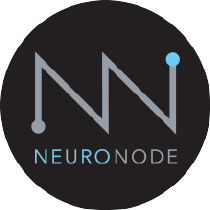Control Bionics PL-27-1100 The NeuroNode is a Bluetooth Low Energy device allowing alternative computer input. User Manual 27 3500 C
Control Bionics The NeuroNode is a Bluetooth Low Energy device allowing alternative computer input. 27 3500 C
Contents
- 1. Manual
- 2. Operator Manual
Operator Manual

Catalog Number: 27-3500
Revision C
Address comments, questions, or requests pertaining to this manual to:
Control Bionics
745 Center Street, Suite 303
Milford, Ohio 45150
www.controlbionics.com
neuronode@controlbionics.com
04182018
The NeuroNode is listed and registered with the FDA as a Powered Communication System and a Powered Environmental
Control System and certified by the Australian Government Department of Health Therapeutic Goods Administration.
Copyright 2006 - 2017 Control Bionics Inc. All Rights Reserved.
NeuroEDUCATOR® and NeuroNode® are trademarks of Control Bionics Inc.
Apple®, Apple logo®, MacBook®, MacBook Air®, MacBook Pro®, iPad® and iTunes® are
registered trademarks of Apple Inc.
Anatomic images©CLIPAREA l Custom media/Shutterstock.
All other trademarks are the property of their respective owners.
Product design and specifications may be changed without notice.
Patent Pending.
This device complies with part 15 of the FCC Rules. Operation is subject to the following two conditions: (1) This device may
not cause harmful interference, and (2) this device must accept any interference received, including interference that may cause
undesired operation.
NOTE: This equipment has been tested and found to comply with the limits for a Class B digital device, pursuant to part 15 of
the FCC Rules. These limits are designed to provide reasonable protection against harmful interference in a residential installa-
tion. This equipment generates, uses and can radiate radio frequency energy and, if not installed and used in accordance with
the instructions, may cause harmful interference to radio communications. However, there is no guarantee that interference will
not occur in a particular installation. If this equipment does cause harmful interference to radio or television reception, which
can be determined by turning the equipment off and on, the user is encouraged to try to correct the interference by one or
more of the following measures:
• Reorient or relocate the receiving antenna.
• Increase the separation between the equipment and receiver.
• Connect the equipment into an outlet on a circuit different from that to which the receiver is connected.
• Consult the dealer or an experienced radio/TV technician for help.
US: (513) 453-4848
US Toll-free: (855) 831-7521
US Fax: (513) 322-4678
AU: (02) 8310-4179